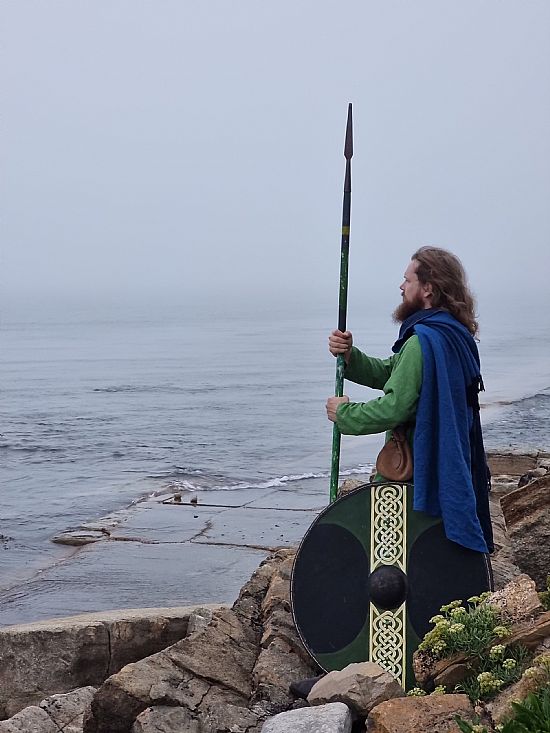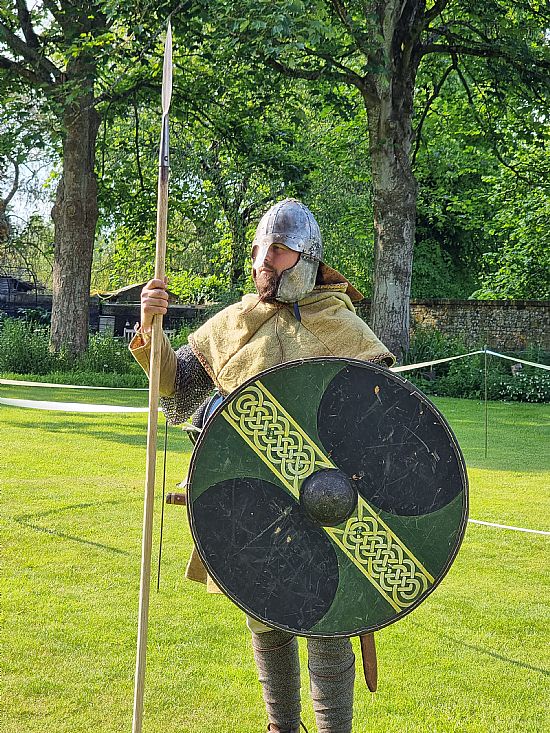What is the Fyrd?

Above: a fyrdsman keeps watch over the Solent for Dane Longships ...
Or more strictly speaking, who are the Fyrd?
From around the start of the 7th century the border disputes amongst the developing Anglo-Saxon kingdoms of Mercia, Kent, East Anglia, Northumbria and the territories of the Sæxian tribes (West Sæxia/Wessex, mid-Sæxia/Middlesex, South & East Sæxia/Sussex & Essex) began a more socially structured approach to warfare.
There were no standing armies as such in those times, not in the way the former Western Roman Empire had been organised. Kings were still regional chieftains upon whom fell the responsibility of both maintaining their military might and ensuring their civilian population could farm, build and raise a family in peace and prosperity. These Kings tended to roam around their lands with an attaché of their best warriors, their royal "household" guards (later "Huscarls") and any fighting men the surrounding area could lend without hindering too much local industry. After all, war might seem important, but soldiers can't fight for long without well made clothing and equipment, and weapons, and of course food and provisions.
At times, though, serious trouble threatened. It might come in the form of a fighting force being raised across the border, or maybe by persistent raids by the Wealasc (lit. Welsh, although this term was equally appplied to the Somersetæ & Cornish (West-Wealasc) and those living in today's Wales). Under such circumstances an Anglo-Saxon King would need to summon every able bodied free man possible to join in a big army, and mount a campaign. That process was easier said than done. Messengers would have to ride out with dispatches from the King, and there was no guarantee that family men, or busy tradesmen, would want to drop everything and go to war.
It was inevitable that a system was needed in which common folk could be summoned to defend their lands swiftly in response to threats, and so the Fyrd System developed.

Above: A fyrdsman on patrol guarding the approach to a local burgh
"Fyrd" literally means "Militia", and is made up in the same way, of civilian folks taking up arms and defending their homes and land. It was made law that every free man owed military service, and so was prepared to be called up into his local Fyrd in response to any threats to their region. It is unclear whether these men had much military training, at least in the early days. By the time of King Alfred the Great, and the introduction of the Burh System during the Anglo-Dane wars, the Fyrd was a disciplined machine, and likely much better equipped than in times past. Just as we have Reserve Armed Forces today, so the Fyrd would have delegated officials who would oversee training of new recruits, and re-training for experienced Fyrdsmen who had survived a number of previous deployments.
At SÆXIA one of our reenactment projects is to depict the various developments of the Purbeck Fyrd, the local militia who would have been called upon in early times to fight against the dominant kingdom of Mercia, defend the western borders with the Somersetæ/west-Wealasc, and launch raids into South Sæxian/Sussex territory. In the mid-Anglo-Saxon era the Purbeck Fyrd would be active in patrolling the coasts and keeping an eye out for marauding Dane & Norse Drakkar longships, and joining the many campaigns of King Alfred as he fought to keep west Sæxia free.

(Above: recreation of a Fyrd Recruitment Commander from the time of King Ælfred)
In latter times the Purbeck Fyrd would have obeyed the summons of King Harold Godwinson to man defences against the anticipated Norman invasion, and then join him on his rapid march north to challenge Harald Hardrada at Stamford Bridge. Any who survived would have then had the long forced march back down south to finally face the Normans at Senlac Hill, in that fateful year of 1066...

(Above: a Purbeck Fyrd sentry position keeping watch over the waters around Swanwic (Swanage) for Dane dragon ships...)

